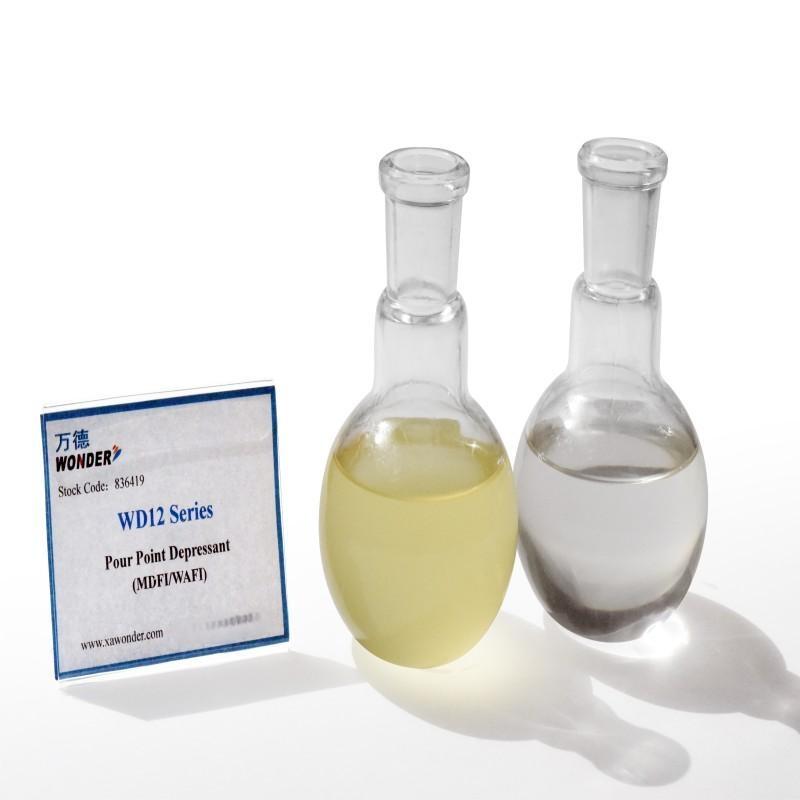-
Categories
-
Pharmaceutical Intermediates
-
Active Pharmaceutical Ingredients
-
Food Additives
- Industrial Coatings
- Agrochemicals
- Dyes and Pigments
- Surfactant
- Flavors and Fragrances
- Chemical Reagents
- Catalyst and Auxiliary
- Natural Products
- Inorganic Chemistry
-
Organic Chemistry
-
Biochemical Engineering
- Analytical Chemistry
-
Cosmetic Ingredient
- Water Treatment Chemical
-
Pharmaceutical Intermediates
Promotion
ECHEMI Mall
Wholesale
Weekly Price
Exhibition
News
-
Trade Service
WTI crude oil failed to support at the $80/barrel mark on Friday, and Brent crude also fell below the $85/barrel mark on Monday, both hitting new lows since January this year, weighing on market confidence
.
Suppressed by the continuous breakdown of international oil prices, crude oil fell sharply on Monday, and the main contract of SC crude oil once hit a new low in nearly half a year in the intraday, falling 6.
94% to close at 610.
3 yuan / barrel
.
Recently, international crude oil prices have continued to fall, and the current US crude oil has fallen below $80 / barrel, completely giving up all the gains since the Russian-Ukrainian conflict, which is similar
to the price at the beginning of the year.
Benefiting from exchange rate factors, the cost of crude oil imports continues to rise, and the price of domestic crude oil is relatively resistant to decline
compared with external crude oil.
In fact, from a high of $123/barrel on June 14 to less than $80/barrel currently, international oil prices have fallen by 35%.
In the face of the continuous decline in international oil prices, Liu Shunchang, an analyst at South China Futures Energy, explained that the marginal impact of the supply side on crude oil has weakened, and the market focus has shifted from the previous supply side to the demand side
.
"The current round of oil price pullback began in June and October the United States released more than expected May CPI data, inflation continued to rise dispelled the market's idea of the Fed's rapid shift to easing, and pushed the Fed to accelerate the expectation of tightening money, the market's worries about the recession in Europe and the United States continued to increase, the demand side began to become the focus of market attention, commodities including crude oil began a downward cycle
.
A series of weaker-than-expected economic data confirmed the market's fears, and oil prices continued to retreat
.
At the same time, gasoline consumption continued to fall short of expectations
in the past US driving season, the traditional gasoline consumption season.
Liu Shunchang said that as of September 16, the four-week demand for gasoline in the United States fell to the lowest seasonal level since 1997; EIA gasoline and diesel accumulation exceeded expectations, gasoline cracking fell sharply, and crude oil demand was facing a test
.
In this regard, Li Yunxu, senior crude oil analyst of SDIC Anxin Futures, also told the Futures Daily reporter that since June, the sixth round of EU sanctions against Russia has been introduced, and the EU's embargo on Russian seaborne crude oil and refined oil products will start on December 5, 2022 and February 5, 2023 respectively, and the market's expectations for the normal supply of Russian oil within the year have been further strengthened
.
"OPEC+ is in a steady production cycle, the risk of supply shortage has not become a reality, but there are signs of further promotion of the resumption of negotiations on the implementation of the Iranian nuclear agreement, which is marginally negative for oil prices
.
" Li Yunxu said that the demand side is affected by the competitive interest rate hikes of various countries, the risk of economic recession has increased, the continuous rise of the dollar index has put risk assets under general pressure, and oil prices have fallen
from high oscillations.
"Since September, the supply side has been relatively little disturbed by the news, and the supply expectations of Russia and Iran are still highly uncertain, and no new main line of trading has
been formed.
" In Li Yunxu's view, the intraday volatility of oil prices is highly linked with the US dollar, and the downward break is mainly due to the continued rise of the US dollar index and the market's concerns
about the demand outlook in the context of competitive interest rate hikes.
The market has long expected that international oil prices will fall again within the year, but the path and timing of the decline are more worthy of deep consideration
.
"In the current international environment, in addition to the confusing situation in Russia and Ukraine, the differentiation of major economies has made the market's grasp of macro policies divergent.
"
Enron, a senior analyst at Huaan Futures, said that in the past, the core of macro analysis was to pay attention to the central bank's monetary policy changes, but now it is more necessary to pay attention to the flexible policy regulation and control
of various governments.
The general decline in commodities was directly due to the recessionary pressure caused by the Fed's interest rate hikes, and Monday's decline in risk assets was triggered by a multi-day transmission effect in financial markets
.
Judging from the recent performance of the oil market, in the context of the Fed's interest rate hike, the dollar strengthened, and the market's growing concerns about the economic downturn dragged down crude oil prices
.
During the interview, the reporter learned that at present, the core logic of dominating the crude oil market is that although the market is still worried about the damage to Russian crude oil production and exports caused by sanctions, considering the transshipment capacity of Russian oil to Asia, the favorable and international reduction of sanctions on oil prices, the market is increasingly
worried about the recession expectations caused by the Fed's accelerated tightening of currency under high inflation.
Li Yunxu believes that the month-to-month price difference of futures is a better indicator of fundamental changes, and has not followed the weakening
of oil prices recently.
In the medium term, global oil final demand and refinery start data are still relatively stable, and the monthly reports of IEA, EIA and OPEC this month have not made substantial adjustments to the demand estimates for this year and next, and the actual impact on demand is temporarily limited
.
On the supply side, OPEC production rose 618,000 b/d to 29.
651 million b/d in August, including Saudi Arabia's August crude oil production increased by 160,000 b/d to 10.
904 million b/d, and Libya's August crude oil production increased by 426,000 b/d to 1.
123 million b/d, which is expected to slow
sharply in September as the agreed volume decreases.
"According to the sixth round of EU sanctions against Russia, the EU's embargo on Russian seaborne crude oil and refined products will start on December 5, 2022 and February 5, 2023 respectively, and the main trading line of the market in the fourth quarter of this year and the first quarter of next year will also be transferred from the previous Russian oil embargo to the actual reduction of Russian oil, and the volatility is expected to be re-amplified and the uncertainty is high
.
" Li Yunxu said that in addition, after Putin announced part of the mobilization last week, oil prices once soared sharply during the session, if the situation in Russia and Ukraine is further tense, Russian oil passively or actively further reduces the volume and Iran's production fails to return, next year's supply increase will be very limited
.
In his view, the supply and demand side does not support the continuous decline in oil prices for the time being, and the dollar is expected to rebound
after the rally slows.
"For the international oil market, the change in supply and demand is relatively limited
.
On the one hand, OPEC+ has not shown an active attitude of reducing production to maintain oil prices, and the Fed's move to reduce the structural demand for crude oil through monetary policy regulation has achieved remarkable results, and the cracking spread of refined oil products has fallen rapidly; On the other hand, the hype of Europe's energy crisis has eased, and Europe's energy reserves have barely reached the target
after significantly weakening industrial demand.
Enron said that the current risks affecting oil prices are mainly concentrated at the macro level, the Fed firmly stated that it will not hesitate to sacrifice the short-term economy to combat inflation, the probability of raising interest rates in the United States to more than 4% within the year has increased significantly, structural demand may continue to be suppressed, and the price trend of risk assets such as crude oil is not optimistic
.
"Overall, the downward trend in oil prices since June 10 is likely to continue
.
" Liu Shunchang said that Russia's crude oil production and export resilience exceeded expectations, the recession expectations in Europe and the United States strengthened, and the demand for gasoline and diesel was
weak.
In his view, OPEC+ cuts production and manages expectations to hedge against the negative impact
of continued weakening demand on oil prices.
The market needs to pay attention to when OPEC+ will start to act and the magnitude
of production cuts as oil prices continue to fall.
In this context, oil prices may show resistance and step gradual decline
.







